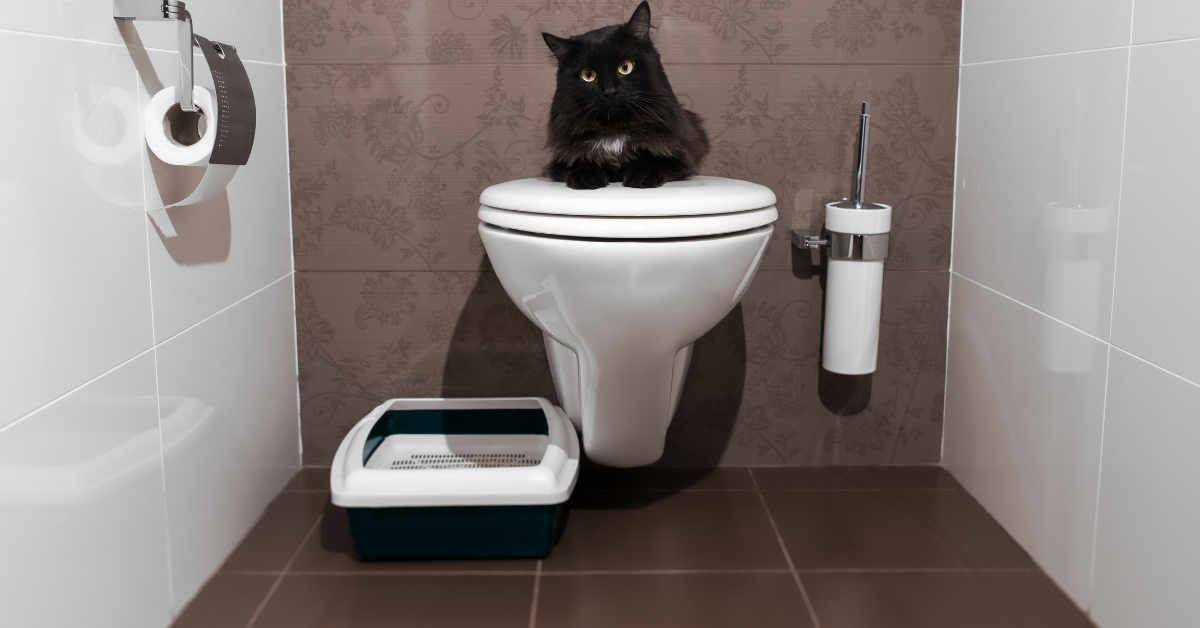Don't Flush Cat Poop Down Your Toilet - Maintain Your Home's Plumbing Integrity
Don't Flush Cat Poop Down Your Toilet - Maintain Your Home's Plumbing Integrity
Blog Article
We have unearthed this great article involving How to Dispose of Cat Poop and Litter Without Plastic Bags below on the web and thought it made perfect sense to relate it with you over here.

Introduction
As feline owners, it's essential to bear in mind just how we take care of our feline close friends' waste. While it might appear convenient to flush feline poop down the toilet, this method can have destructive repercussions for both the setting and human health.
Alternatives to Flushing
Luckily, there are more secure and a lot more accountable ways to deal with pet cat poop. Think about the following alternatives:
1. Scoop and Dispose in Trash
The most common technique of getting rid of cat poop is to scoop it into a naturally degradable bag and throw it in the trash. Be sure to use a dedicated litter inside story and get rid of the waste quickly.
2. Use Biodegradable Litter
Choose biodegradable cat clutter made from products such as corn or wheat. These clutters are eco-friendly and can be safely thrown away in the garbage.
3. Hide in the Yard
If you have a yard, take into consideration hiding cat waste in a marked location away from veggie gardens and water resources. Make sure to dig deep sufficient to stop contamination of groundwater.
4. Mount a Pet Waste Disposal System
Invest in an animal waste disposal system especially created for feline waste. These systems use enzymes to break down the waste, decreasing smell and ecological impact.
Health Risks
Along with environmental concerns, purging feline waste can likewise present health dangers to humans. Cat feces might consist of Toxoplasma gondii, a parasite that can create toxoplasmosis-- a potentially severe disease, specifically for pregnant females and individuals with weakened immune systems.
Ecological Impact
Flushing pet cat poop introduces harmful microorganisms and parasites into the water, positioning a substantial danger to marine ecological communities. These contaminants can negatively impact marine life and concession water top quality.
Conclusion
Liable animal ownership expands past offering food and sanctuary-- it additionally includes correct waste monitoring. By refraining from purging feline poop down the commode and choosing alternative disposal methods, we can decrease our ecological footprint and secure human health and wellness.
Why Can’t I Flush Cat Poop?
It Spreads a Parasite
Cats are frequently infected with a parasite called toxoplasma gondii. The parasite causes an infection called toxoplasmosis. It is usually harmless to cats. The parasite only uses cat poop as a host for its eggs. Otherwise, the cat’s immune system usually keeps the infection at low enough levels to maintain its own health. But it does not stop the develop of eggs. These eggs are tiny and surprisingly tough. They may survive for a year before they begin to grow. But that’s the problem.
Our wastewater system is not designed to deal with toxoplasmosis eggs. Instead, most eggs will flush from your toilet into sewers and wastewater management plants. After the sewage is treated for many other harmful things in it, it is typically released into local rivers, lakes, or oceans. Here, the toxoplasmosis eggs can find new hosts, including starfish, crabs, otters, and many other wildlife. For many, this is a significant risk to their health. Toxoplasmosis can also end up infecting water sources that are important for agriculture, which means our deer, pigs, and sheep can get infected too.
Is There Risk to Humans?
There can be a risk to human life from flushing cat poop down the toilet. If you do so, the parasites from your cat’s poop can end up in shellfish, game animals, or livestock. If this meat is then served raw or undercooked, the people who eat it can get sick.
In fact, according to the CDC, 40 million people in the United States are infected with toxoplasma gondii. They get it from exposure to infected seafood, or from some kind of cat poop contamination, like drinking from a stream that is contaminated or touching anything that has come into contact with cat poop. That includes just cleaning a cat litter box.
Most people who get infected with these parasites will not develop any symptoms. However, for pregnant women or for those with compromised immune systems, the parasite can cause severe health problems.
How to Handle Cat Poop
The best way to handle cat poop is actually to clean the box more often. The eggs that the parasite sheds will not become active until one to five days after the cat poops. That means that if you clean daily, you’re much less likely to come into direct contact with infectious eggs.
That said, always dispose of cat poop in the garbage and not down the toilet. Wash your hands before and after you clean the litter box, and bring the bag of poop right outside to your garbage bins.
https://trenchlesssolutionsusa.com/why-cant-i-flush-cat-poop/

We had been brought to that write-up on Don’t flush cat feces down the toilet from a good friend on a different site. Enjoyed our blog entry? Please share it. Let other people discover it. Thanks for your time. Come back soon.
Information Report this page